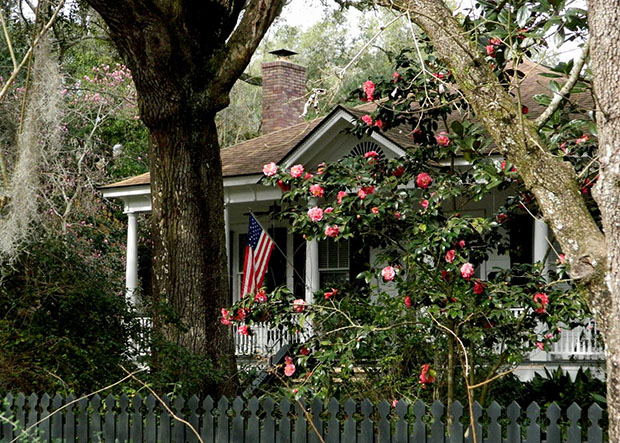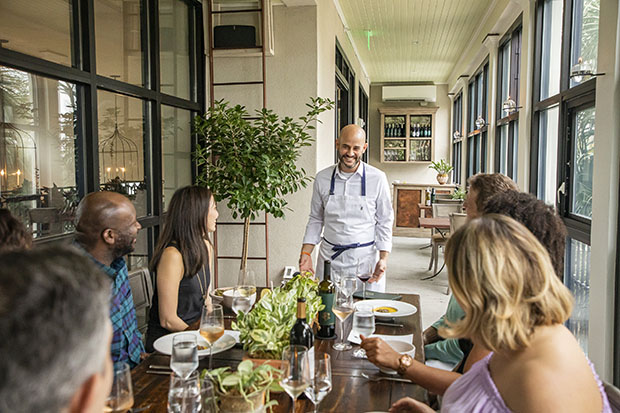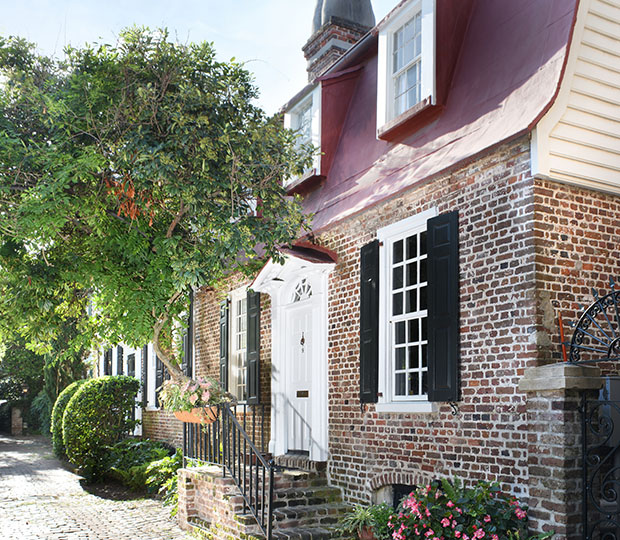The Healing Power of Pine
04 Mar 2020
Summerville’s unusual beginnings
By Suzannah Smith Miles

Most know that Summerville got its start as an early 19th century summer resort, thus the town’s name. Yet when a writer in 1853 wrote that Summerville was “well adapted to renovate the invalid,” he was (pun intended) deadly serious.
Early planter families weren’t so much “resorting” to a place for a summer of fun and recreation as they were running for their lives.
Each May, as months turned warmer, they literally ran away from home when their rice plantations were beset by killing epidemics of malaria and yellow fever.
Medicine was rudimentary at this time in history and doctors were mystified by the cause of these diseases. The blame was usually placed on the “bad air” emanating from the lowland swamps, hence the word “malaria.” The discovery of the mosquito as the carrier of malaria and yellow fever had yet to occur. Nor did they yet realize that a flooded rice field was an ideal mosquito-breeding pond.
All they knew was that a summer spent on the plantation was an open invitation to sickness and very often, death.
Thus every May began an annual migration of entire families from their farms and plantations to healthier climes. As Charleston clergyman William Hasell Wilson (1811-1902) wrote, “It was considered unsafe to [return] to the plantations before there had been two or three frosts… Some of them had summer residences in the Pine Woods or would go to cities which were more healthy, or to the mountainous regions in the upper part of the state…or traveled in Europe or at the North.”
Doctors soon began promoting the medical benefits of the pine-forested ridges just above the coastal plain, the aptly named Pine Belt, and how elevation coupled with the turpentined-aroma of the pines had curative properties.
The resulting popularity of the pineland summer retreats came remarkably quickly, giving us the aptly named communities we know today as Pineville, Pinopolis and, of course, Summerville. Not surprising, when the town was incorporated in 1847, its official seal contained the motto, “Sacra Pinus Esto—The Pine is Sacred.”
By the mid-1800s, coupled with a regular rail line to Charleston, Summerville was one of the most popular summering resorts in the Lowcountry. Early on, the lodgings were unimpressive. In a 1931 News & Courier article, Maria Herriott Allan described the architecture of the early houses as simple, with most of them “built of logs, ‘chinked’ with clay. Some had clay chimneys, some had none at all. When one of the citizens built a house with brick chimneys and plastered walls, he was censured for his extravagance in spending so much money on a mere summer house which might easily be destroyed by fire during the long winter months when it was vacant.”
Despite the upheavals caused by the major earthquake of August 1886, Summerville continued to draw visitors, not only from the Lowcountry but from the entire United States. By the 1890s, the cabins had become commodious cottages and some, grand estates. Boarding houses, hotels and inns accommodated guests.
The grandest of all was the Pine Forest Inn which opened in 1891. Surrounded by 60 acres of pine forest, walking trails and a golf course, this was a grand hotel, a massive four-story structure of 150 rooms with lavish amenities, including “unexcelled cuisine,” a bowling alley, swimming pool, golf course, tennis courts, croquet and a 50-horse stable.
The inn was also touted as “The Finest Health Resort in the World.” This time, the health threat was tuberculosis. Summerville gained international fame In 1893 when the International Tuberculosis Congress of Paris formally announced that the best place for curing (or avoiding) tuberculosis was a “low, dry altitude in a pine wood region where the air is charged with derivatives of turpentine; I refer to such a place as Summerville, S.C.” Among the notables who visited included U.S. Presidents Theodore Roosevelt and William Howard Taft.
By the 1920s and 1930s, visitors began coming to Summerville for the town’s springtime blooms. Wrote Maria Herriott Allan in 1931, “Summerville of the present is a town of 2,500 inhabitants, with electric light, water and paved streets. But these modern improvements have in no way detracted from the quaint charm of this unique town, with its wealth of trees, flowers and birds…almost every home, whether set in a tiny ‘door yard’ or in parklike grounds, is surrounded by flowers. The vivid yellow forsythia, the scarlet pirus japonica, the feather white spirea, daffodils, narcissi, the camellia japonica, white, pink, variegated or deep crimson, the rainbow masses of the azalea ‘too beautiful to be true.’”
In the late 1930s, the creation of Azalea Park (home of the annual Flowertown Festival held each spring) further enhanced this beauty. With the town’s help and using Work Progress Administration money under The New Deal, 16 acres was purchased by the Ladies Civic League, a forerunner of the garden club and were transformed into a flowering paradise.
Some 33,000 plants were donated by azalea pioneer and propagator, George Segelken, who planted many of the azaleas himself. Segelken died in 1978 but among the many hybrids he developed was the most popular salmon pink Indica azalea he named “Pride of Summerville.”
Today, Summerville's quaint charm continues to enchant. It is a town of history, of picket-fenced cottages and, each spring, it offers an unsurpassed explosion of colorful springtime blooms. Of all the beautiful places in the Lowcountry, the “Flower Town in the Pines" is indeed one of the best.











